ENCORE SUNDAY – THE AMC FACTORY PRO STOCK EFFORT
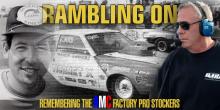
Richard Maskin had a morning ritual back in 1971 from which he rarely deviated. He’d head into his office at his grandfather's business, Barnett Pontiac, sit down with his cup of coffee and read the morning newspaper. One day, instead of reading his local paper, Maskin instead picked up an automotive news publication. While he didn't know it at the time, that simple change of routine would forever change the course of his life.
Maskin, a C/Modified Production competitor at the tracks around Detroit saw where Bob Swaim, formerly with the Ford Motor Company, had accepted a position with American Motors. He wasted no time in calling Swaim and scheduling a lunch meeting. It made sense because their offices were only five miles apart.
Maskin learned that Swaim had already offered a deal to “Dyno” Don Nicholson as part of a major push for the American Motors brand in NHRA Pro Stock. Swaim told him there were two smaller programs in addition to Nicholson’s major Pro Stock effort.
Originally published 11-30-2007
How Booth and Maskin built a Pro Stock operation from scratch
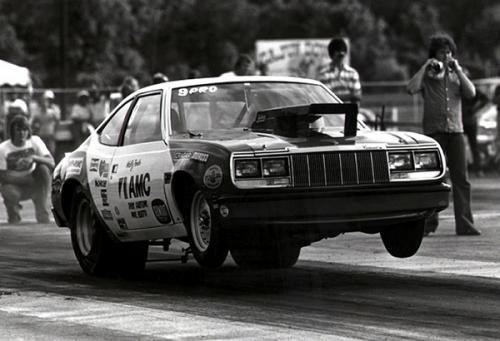
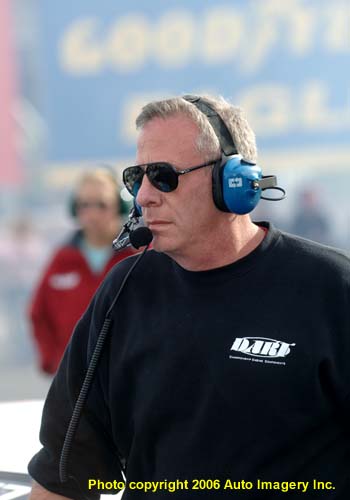
Maskin, a C/Modified Production competitor at the tracks around Detroit saw where Bob Swaim, formerly with the Ford Motor Company, had accepted a position with American Motors. He wasted no time in calling Swaim and scheduling a lunch meeting. It made sense because their offices were only five miles apart.
Maskin learned that Swaim had already offered a deal to “Dyno” Don Nicholson as part of a major push for the American Motors brand in NHRA Pro Stock. Swaim told him there were two smaller programs in addition to Nicholson’s major Pro Stock effort.
One of those smaller programs had all but been earmarked for a friend of a friend of Roger Penske’s – Rich LaMont. Maskin got the final spot on the team.
As quickly as the opportunity materialized for Maskin, it fell like a rock.
“I got a call from Swain telling me that Ford had anteed up when they realized Nicholson was leaving,” Maskin said. “Dyno was pretty cheap in those days, so he stayed with Ford. The AMC program almost fell apart and I almost lost my deal. There wasn’t going to be anything.”
Maskin recommended Wally Booth as the perfect replacement for Nicholson. At the time, Booth was second only to Bill “Grumpy” Jenkins in terms of success in Chevrolet Pro Stock. Besides, Maskin had purchased engines from Booth and Dick Aarons for his C/Modified Production Camaro.
a d v e r t i s e m e n t
Click to visit our sponsor's website
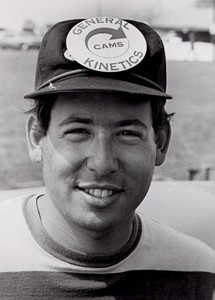
Swaim made the call to Booth letting him know there was a bunch of parts and cash available for the person who took the AMC Pro Stock deal. It was more than just taking cash and going racing for Booth, Maskin and LaMont.
They had to transform the image of being the grocery-getter Rambler manufacturer to a high performance alternative from the traditional “Big Three.” Booth, Dick Arons [then aligned with Booth] and Maskin had to undertake building an engine virtually from scratch.
There was only one problem. Nobody had any parts readily available.
“We didn’t have anyone making any parts for us during those days,” Maskin said. “I learned the business I am in today as a result of the axiom ‘necessity is the mother of all inventions.”
“We had to make a lot of stuff for those cars to make them competitive. We lobbied for weight breaks and wheelbase. Once the Ford guys figured that out, Glidden went to the 1970 Mustang and Roush had the 4-door Maverick. We were at a disadvantage for a little while until they figured out how fast those canted valve Fords were – they put some weight on them. That got everyone back in a pack together.”
Booth added that a few manufacturers pitched in to get the program off of the ground.
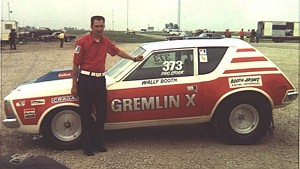
According to Booth, the basic AMC components weren't that bad, despite the company's non-racing image.
"They had a good block to begin with,” Booth said. “It had a wide bore and a short stroke. If you remember, the American Motors AMX's had done pretty well in Super Stock. The basic AMC design was better than most people gave it credit for."
The early AMC engines ranged in displacement from 342 to 370 cubic inches.
a d v e r t i s e m e n t
Click to visit our sponsor's website
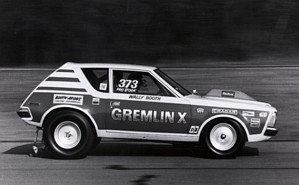
Booth began with a Tom Smith-built Gremlin X while Maskin and while Maskin and original partner Jim Gilbert started with one, they were the first to convert to a Hornet. The aerodynamic difference between the two body styles was as clear as night and day. Neither were sleek air-cutters, but the Hornet did have an advantage and that came to light in an April 1973 test session when identical engines were ran in each car.
"The Gremlin was about three and a half miles per hour and a tenth of a second slower than the Hornet," said Booth. "After that, I ordered a new Hornet from Smith that we debuted at the Spring Nationals in June, and we started to run better.”
The AMC team had worked tirelessly to bring the combination up to speed and their first victory came at the 1974 Gatornationals in Gainesville, Fla.
"There had been some personnel changes at AMC," said Booth. "Swaim and the other people backing the program had been shifted to other parts of the company, and it was all but official that they were going to put their resources elsewhere. The Gatornationals win absolutely saved the program, and Swaim's replacement, Bob Wheat, was instrumental in capitalizing on the win. He had been hired to promote racing, and after the Gatornationals, he finally had something to promote.
"It certainly would have been tragic if it had ended then since we had gone from nothing to the winner's circle in just slightly over two years."
Cylinder head technology, now Maskin’s money-maker, was discovered to be the key to making the AMC cars run quickly. Booth drove his Hornet to the top qualifying spot at the 1975 U.S. Nationals.
a d v e r t i s e m e n t
Click to visit our sponsor's website
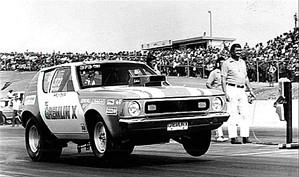
That season was the one that almost didn’t happen for the AMC team as Booth said that NHRA tech director Jack Hart had notified him that their cylinder heads would be illegal for 1976. Since much of his funding had fallen through, he raced Pomona with a Vega that he’d leased from Andy Mannarino. He lost in the first round at that event. That early loss would come back to haunt him, as well as an early departure in Gainesville. Booth lost the championship that year to Larry Lombardo by six rounds.
The program reached its highest point in 1976 when Booth met Dave Kanners (driver for Maskin) in the final round during the NHRA Finals at Ontario, Ca. Booth won.
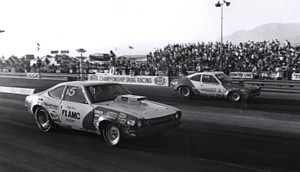
“The energy crisis came along and we lost most of our backing. I had another sponsor, who was going to give me a great deal of money as well. I lost a couple of hundred thousand dollars of sponsorship in two phone calls. We continued on self-funded because we already had everything there.”
Booth and Maskin ran a few more seasons and finally closed up shop in 1979. Maskin went on to create Dart cylinder heads and Booth returned to his engine building business.
"I was racing some on my own money that year,” Booth said. “I was running over 160 mph in test at Orange County (Int'l Raceway) two weeks before the Winternationals which was real good at the time. We broke my good motors during those tests though, and I showed up at Pomona with garbage under the hood. At that point I felt like I was done, but I ran the rest of the races anyway to meet my obligations with the sponsors. After the year was over, that was it. I retired from racing."
John Jodauga, National DRAGSTER contributed to this article
| {loadposition feedback} |







































